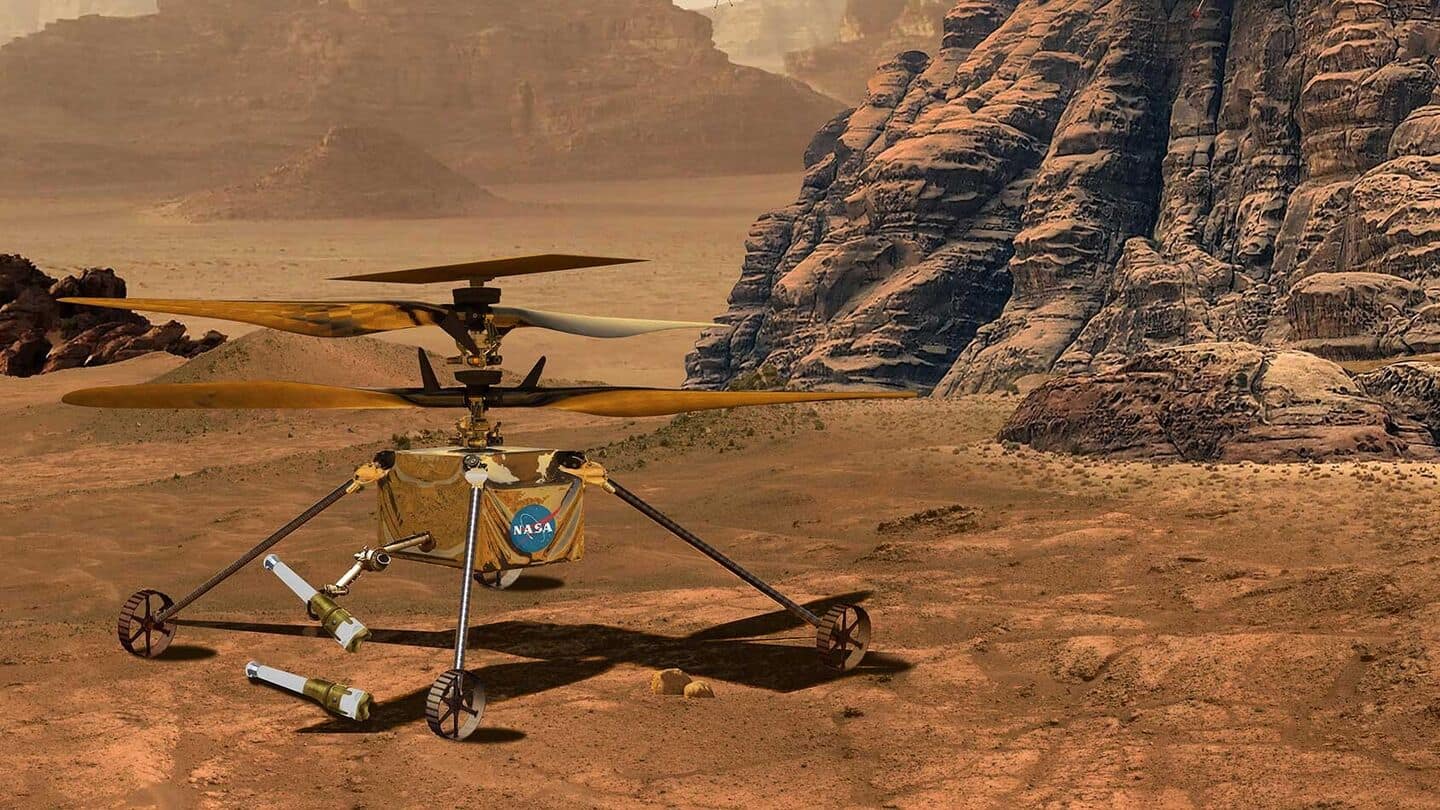
NASA plans SUV-sized drone to explore Mars after Ingenuity's success
What's the story
NASA is planning a revolutionary Mars helicopter mission, Nighthawk, to explore the Red Planet's expansive network of volcanic canyons.
Riding on the success of its predecessor, Ingenuity (which completed 72 flights on Mars), NASA is now working on a bigger drone, the SUV-sized Mars Chopper.
It will employ six rotors with six blades each to fly through the thin Martian atmosphere.
Mars exploration
Mission and objectives
Nighthawk will use the Mars Chopper to explore Eastern Noctis Labyrinthus, a scientifically rich region on Mars.
The area lies at the intersection of Valles Marineris's canyon system and Tharsis's vast volcanic plateau.
Nighthawk's main objectives include studying potential biomarkers in this region, which is thought to be a deeply eroded and glaciated giant volcano, and determining its suitability for future human exploration.
Tech specs
Nighthawk's advanced scientific equipment
Nighthawk will carry three science payloads, consuming just 3kg of the 5kg payload mass available on Mars Chopper.
This way, it can fly much higher than Ingenuity, with a ceiling of 1,500m above the global average Mars altitude.
The payloads are OCCAM (Omni-directional Color CAMera system), an eight-camera color imager for navigation and geological context; NIRAC spectrometer and context camera; PMWS (Puli Mars Water Snooper), and a neutron detector for assessing water abundance in near subsurface areas.
Mission duration
Operational timeline and flight capacity
Nighthawk would be able to fly for at least 240 days on Mars, making up to 100 flights of nearly 3km each.
As per the paper led by Pascal Lee of NASA's Ames Research Center in California, "Nighthawk's science mission would not be achievable with an Ingenuity-class helicopter."
However, it could be done with the larger and more capable NASA Mars Chopper currently under design.